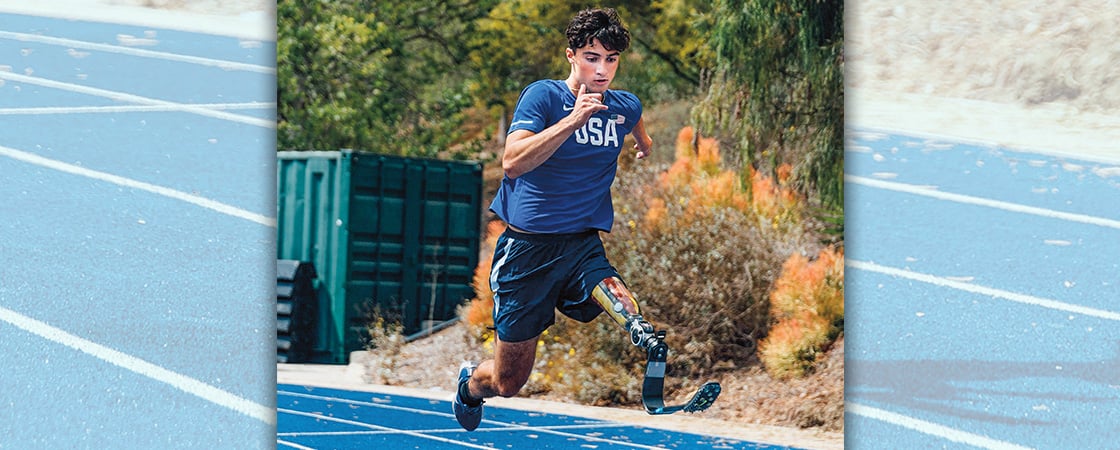Ezra Frech was running with every bit of strength he had, pushing himself forward on his powerful legs. One of Ezra’s legs was flesh, muscle, and bone. Part of his other leg was made of a material stronger than steel.
It was August 31, 2021, and Ezra, then 16, was competing in the high jump event at the Paralympic Games in Tokyo, Japan. The Paralympics are where the world’s top athletes with a range of disabilities come together to compete. Tennis players in wheelchairs move over the court with lightning speed and precision. Soccer players with vision impairments score breathtaking goals. There are events in swimming, archery, triathlon, and more. It’s a thrilling competition, enjoyed by billions of spectators.
Ezra had dreamed of winning a medal at the Paralympics since he was 11 years old. He’d trained for years, at times so intensely his body nearly broke down. Now the moment he’d been waiting for—the culmination of all his hard work—had arrived.
The weather in Tokyo had been sweltering, and now rain poured from the sky. As Ezra approached the bar, he picked up speed, his hair and uniform soaked. His heart pounded. His muscles screamed.
Was his dream about to come true?
Ezra Frech was running with every bit of strength he had, pushing forward with his powerful legs. One of Ezra’s legs was flesh, muscle, and bone. Part of his other leg was made of a material stronger than steel.
It was August 31, 2021. Ezra was 16. He was competing in the high jump event at the Paralympic Games in Tokyo, Japan. The Paralympics are a set of competitions for the world’s top athletes with disabilities. There are events in tennis, soccer, swimming, archery, triathlon, and more. Billions of spectators enjoy the events.
Ezra had dreamed of winning a medal at the Paralympics since he was 11 years old. He’d trained for years. Now the moment he’d been waiting for—the culmination of all his hard work—had arrived.
The weather in Tokyo was hot and rainy. As Ezra approached the bar, he picked up speed. His hair and uniform were soaked. His heart pounded. His muscles screamed.
Was his dream about to come true?

